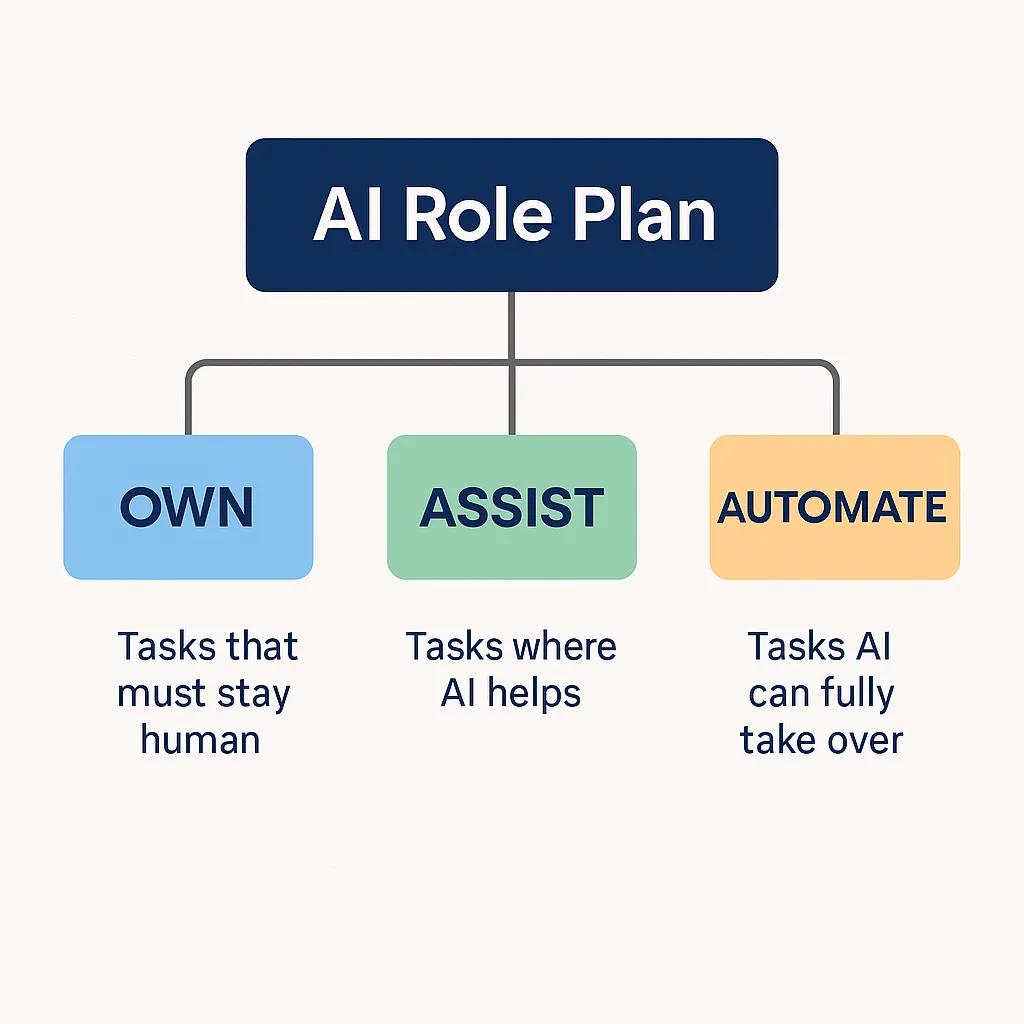
How to Build an AI Role Plan for Every Position on Your Team st
A Practical Framework to Map AI Into Real Workflows
In our last blog, we talked about treating AI as a team member, not just a tool.
But how do you actually do that?
This is where an AI Role Plan comes in—a practical framework that helps you map AI capabilities across your entire team. It’s how smart companies stop talking about AI… and start working with it.
What Is an AI Role Plan?
Think of it like a job description upgrade.
For every person on your team, you identify:
What they do manually
What could be augmented with AI
What can be fully automated
You’re not replacing people—you’re giving them superpowers.
Imagine this:
Your executive assistant still manages calendars, but AI handles rescheduling, timezone syncing, and reminders.
Your HR manager still leads interviews, but AI screens applicants and flags promising resumes 5x faster.
Your marketing team still crafts brand messaging, but AI pulls the data to prove what’s resonating.
This framework gives every team member their own AI partner.
The 3-Part AI Role Plan Template
Here’s the simple format Steven uses in workshops:
OWN: Tasks that must stay human—judgment, emotion, creativity, strategy
ASSIST: Tasks where AI helps the person work faster and smarter
AUTOMATE: Tasks AI can fully take over (e.g., scheduling, transcription, formatting)
You can apply this to any department—sales, marketing, HR, ops, finance, customer service. Even solopreneurs can build one for themselves.
How to Get Started
Pick one role—Start with a single team member or department.
List all core tasks they do weekly or monthly.
Categorize those tasks using the OWN / ASSIST / AUTOMATE method.
Assign an AI tool (or placeholder) to each assist/automate item.
Review every 60 days—AI evolves fast; your plan should too.
Bonus Tip: Make this part of your quarterly review rhythm. It’s how your team evolves with AI instead of getting left behind.
This approach creates clarity. It reduces overwhelm. And it shows your team that AI isn’t taking their job—it’s changing their job for the better.
Most importantly, it makes AI implementation scalable and repeatable across your entire organization.
You wouldn’t build a team without clear roles.
Don’t bring in AI without them either.
When every role has a clear AI plan, productivity soars—and your people get back to doing what they’re great at: thinking, leading, connecting, and creating.
Ready to Build Your First AI Role Plan?
Meet Steven Edwards: Your AI Coach for Executives and Trainers
Steven Edwards helps teams stop drowning in AI overwhelm and start working with clarity and confidence. The AI Transformation Method™ includes role-by-role planning tools to integrate AI where it matters most.
Work with Steven Edwards
👉 Book a Coaching Appointment
Let’s explore how AI can transform the way you work. Whether you're new to AI or ready to scale, Steven is here to guide you.
👉 Learn More About AI with this Course
Dive into The AiMBA MasterClass and Certification to master AI tools and techniques and step into the future with confidence
